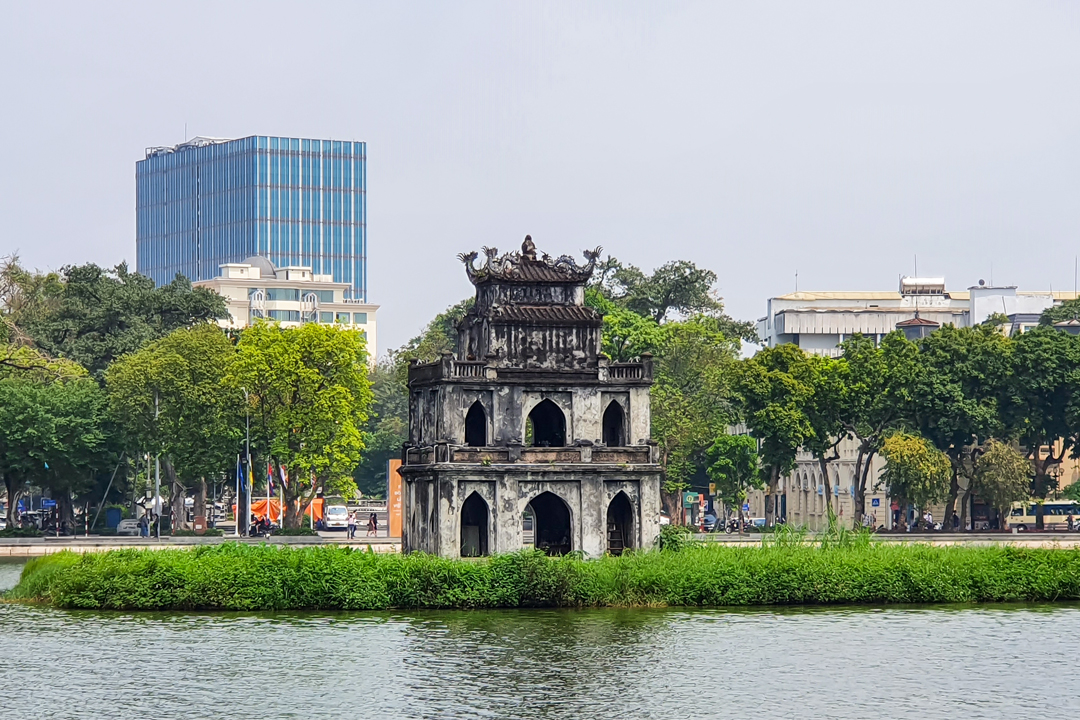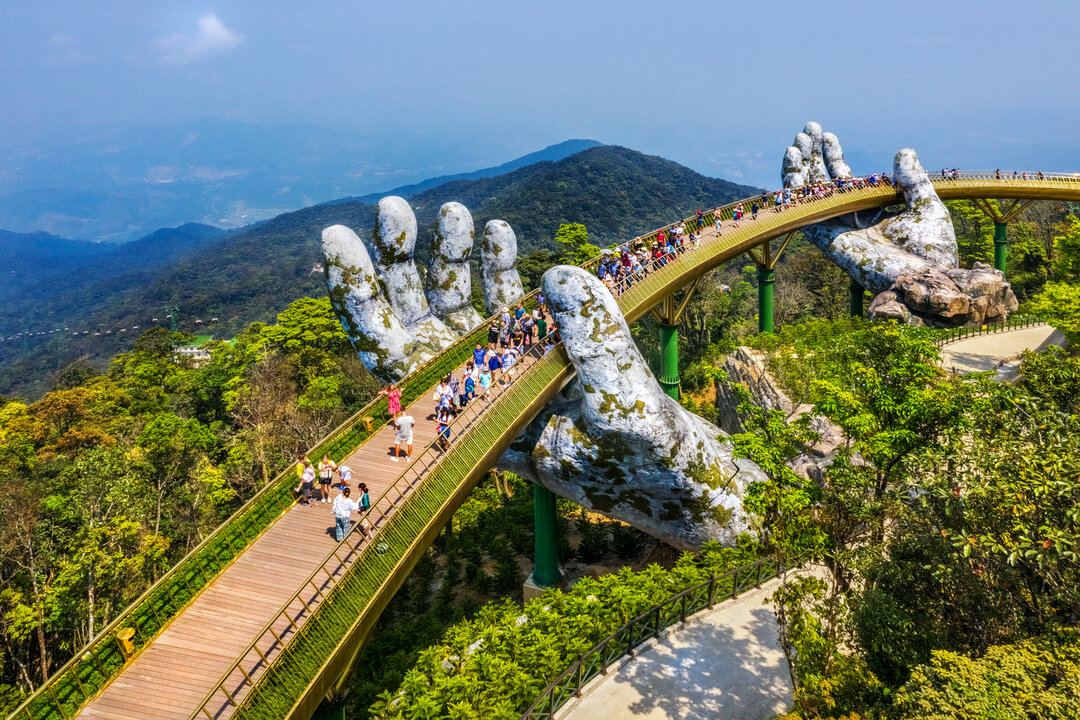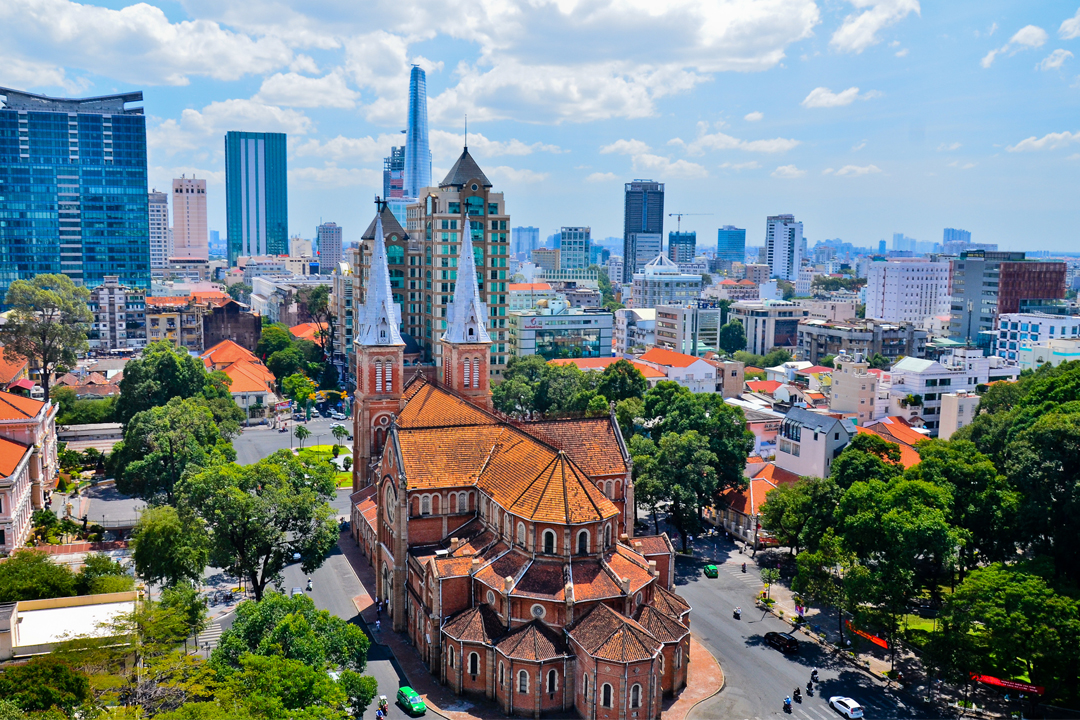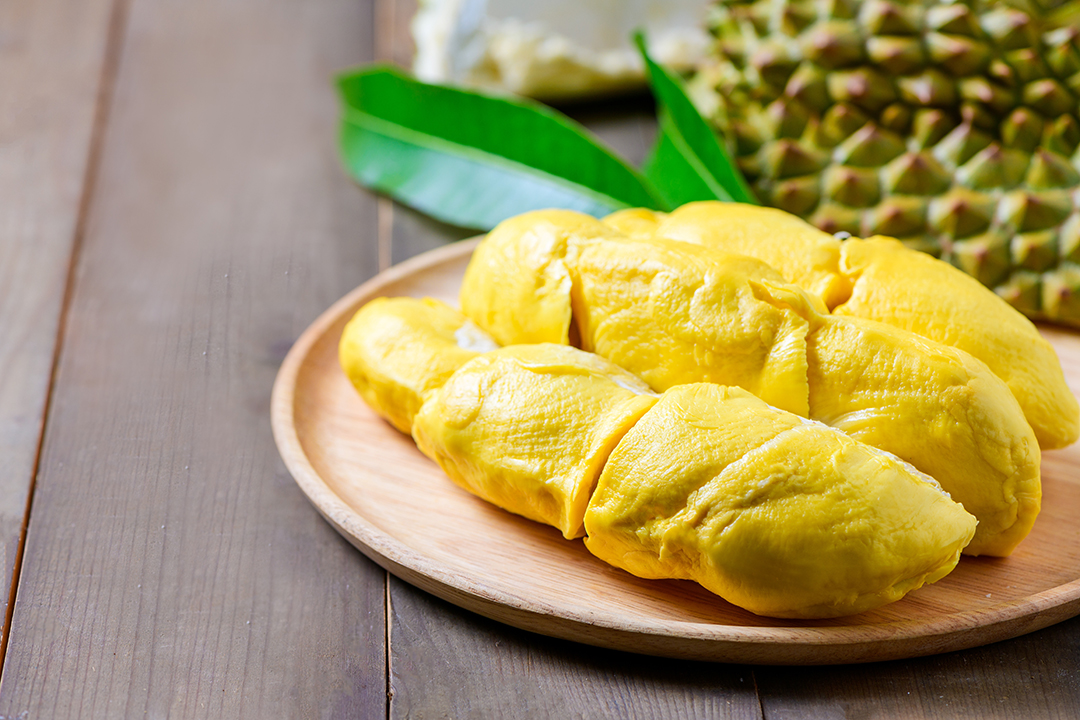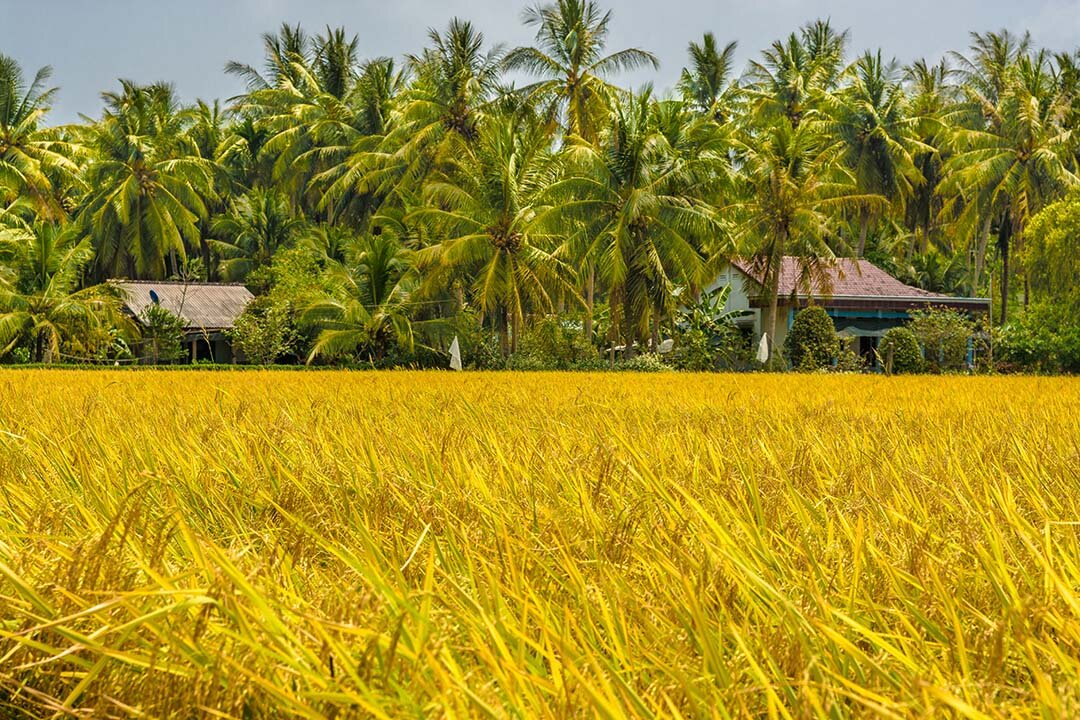Jul - 03 - 2025
Tay Phuong Pagoda is one of the oldest Buddhist temples in Hanoi, with historical roots tracing back to the 8th century. Located in Thach Xa Commune, Thach That District, the pagoda holds an important place in Vietnam’s religious and cultural heritage. Over centuries, it has undergone several restorations, most notably during the 17th century under the Later Le dynasty. The pagoda is known for its collection of ancient wooden statues and traditional architectural features that reflect historical Buddhist artistry. Unlike many religious sites in Hanoi, Tay Phuong Pagoda offers insight into Vietnam’s spiritual heritage and serves as a site for both worship and cultural study. In this article by GTrip, we examine Tay Phuong Pagoda as a historical site and as a symbol of Vietnam’s enduring Buddhist legacy.
Introduction to Tay Phuong Pagoda
Nestled among the emerald hills of northern Vietnam, Tay Phuong Pagoda stands as one of the country's most treasured Buddhist temples. It blends spiritual significance with architectural brilliance. This ancient sanctuary offers you a glimpse into Vietnam's religious heritage and showcases exceptional craftsmanship that has endured for centuries. Before embarking on your journey to this cultural gem, understanding its location and distinctive architectural elements will enhance your appreciation of this sacred site.
Where is Tay Phuong Pagoda
Tay Phuong Pagoda is situated approximately 30 kilometers west of Hanoi's city center in Thach Xa Village, Thach That District. The pagoda rests serenely atop Tay Phuong Mountain (also called Ca Mountain) at an altitude of about 100 meters above sea level. This strategic hillside location provides visitors with panoramic views of the surrounding Red River Delta's lush countryside.
Visitors traveling from central Hanoi can reach the pagoda by following these routes:
- Via Highway 32: Take Highway 32 westward through Ha Dong District, continuing toward Phung and Thach That (approximately 45 - 60 minutes by car).
- Via Thang Long Highway: Follow this modern expressway west before connecting to local roads toward Thach That district (typically 35 - 45 minutes from the city).
The official address is located in Thach Xa Commune, Thach That District. While the pagoda feels worlds away from urban life, its accessibility makes it perfect for day trips from the capital. The surrounding area features traditional villages and rice paddies that offer an authentic glimpse of rural Vietnamese life. It creates a tranquil atmosphere that complements the spiritual experience.
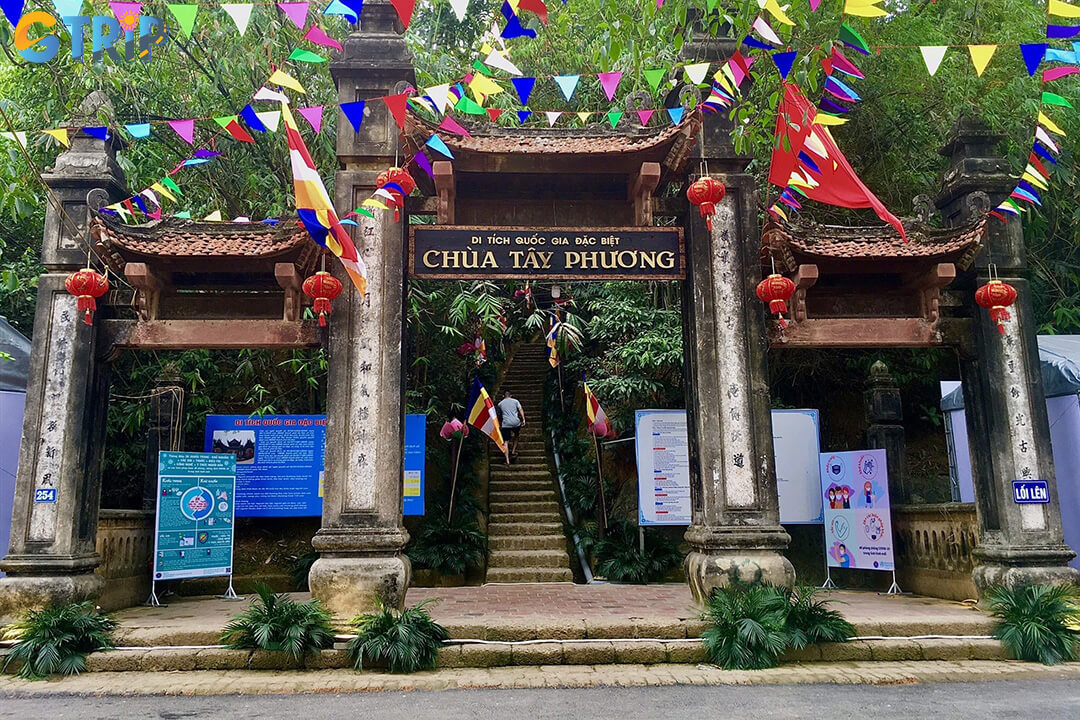
Tay Phuong Pagoda sits atop a peaceful hillside in Thach Xa Village, an accessible day-trip spot offering scenic views and a glimpse of rural life
Architecture of Tay Phuong Pagoda
The pagoda exemplifies traditional Vietnamese Buddhist architecture with several distinctive features that have earned it recognition as one of Vietnam's architectural treasures. The pagoda's design harmonises with its natural surroundings while showcasing exceptional craftsmanship.
Tay Phuong Pagoda today is a complex consisting of several units, including the Lower Gate, Upper Gate, Mountain God Shrine, Front Hall, Middle Hall, Main Hall, Patriarch’s House, Mother’s House, and Guest House.
- The Lower Gate is located at the foot of Cau Lau Mountain and marks the beginning of the path to the pagoda.
- Visitors climb 247 stone steps from the Lower Gate to reach the Upper Gate, which is the entrance to the main pagoda area.
- The Mountain God Shrine is on the left side, separate from the main complex, serving as a place to worship the mountain deity and Duc Ong, with traditional wooden architecture and tiled roofs.
- The Main Pagoda sits on the summit of Cau Lau Mountain and has a “Cong” (工) shaped layout with three halls: Front Hall, Middle Hall, and Main Hall. All three have wooden frames with layered eaves and two tiers of eight roofs designed in the curved “tau dao la mai” style. The Front and Main Halls have 5 bays and 2 side aisles with 6 roof trusses, while the Middle Hall has 3 bays, 2 side aisles, and 4 roof trusses. The Main Hall’s roof is higher than the others.
- The Patriarch’s House and Mother’s House are built in a 3-bay, 2-aisle style with a “Nhi” (二) shaped structure. The Patriarch’s House worships the patriarch outside and the Mother inside, featuring detailed carved beams and floral decorations.
- The Guest House is used to welcome visitors.
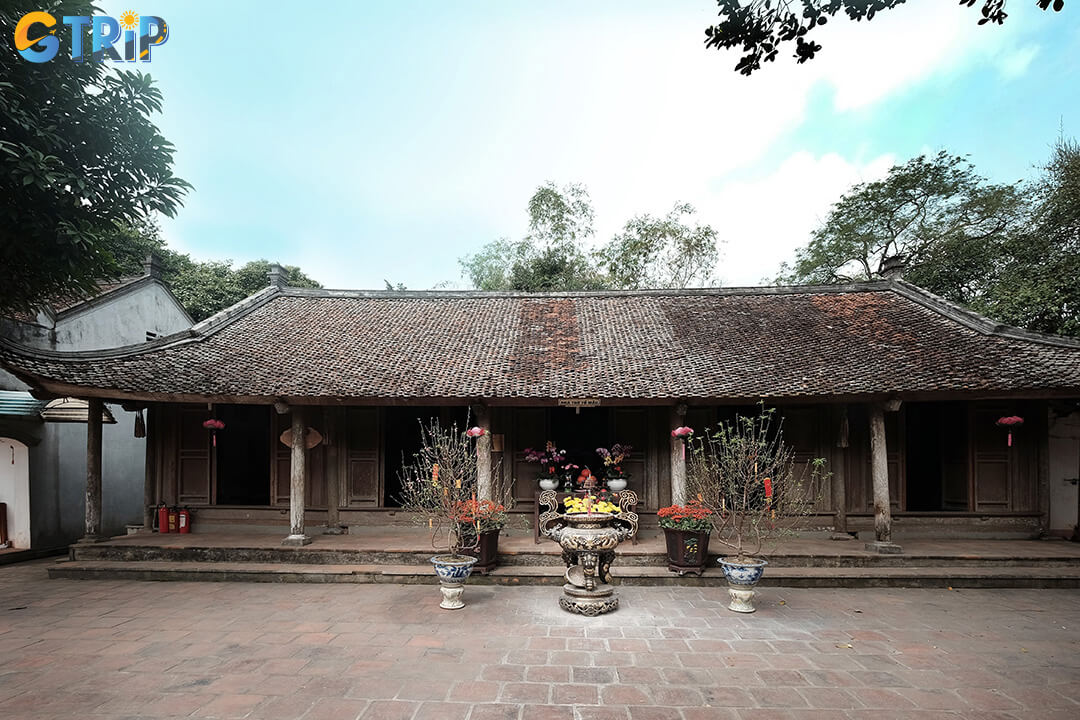
The pagoda showcases traditional Vietnamese Buddhist architecture through its hillside layout and intricately crafted wooden structures
The entire structure employs traditional mortise-and-tenon joinery techniques, meaning no nails were used in its construction. This ancient building method allows the wooden structure to flex slightly during earthquakes or strong winds, contributing to its remarkable longevity. The pagoda's double-tiered roofs curve elegantly at their corners, resembling phoenix tails, a classic element of Vietnamese religious architecture.
Inside, the pagoda houses its most celebrated treasure: the collection of 18 Arhat statues (La Han). Carved from jackfruit wood during the Tay Son Dynasty, these statues represent enlightened disciples of Buddha and are considered masterpieces of Vietnamese Buddhist sculpture.
Names of the 18 Arhats:
- Ton Gia Ca Diep (Tôn Giả Ca Diếp)
- Ton Gia A Nan (Tôn Giả A Nan)
- Thuong Na Hoa Tu (Thương Na Hòa Tu)
- Uu Ba Cuc Da (Ưu Bà Cúc Đa)
- De Da Ca (Đề Đa Ca)
- Di Gia Ca (Di Giá Ca)
- Ba Tu Mat (Bà Tu Mật)
- Phat Da Nan De (Phật Đà Nan Đề)
- Phat Da Mat Da (Phật Đà Mật Đa)
- Hiep Ton Gia (Hiệp Tôn Giả)
- Ma Minh (Mã Minh)
- Ca Ty Ma La (Ca Tỳ Ma La)
- Long Thu (Long Thụ)
- La Hau La Da (La Hầu La Đa)
- Tang Gia Nan De (Tăng Già Nan Đề)
- Gia Da Xa Da (Già Đa Xá Đa)
- Cuu Ma La Da (Cưu Ma La Đa)
- Xa Da Da (Xa Đạ Đa)
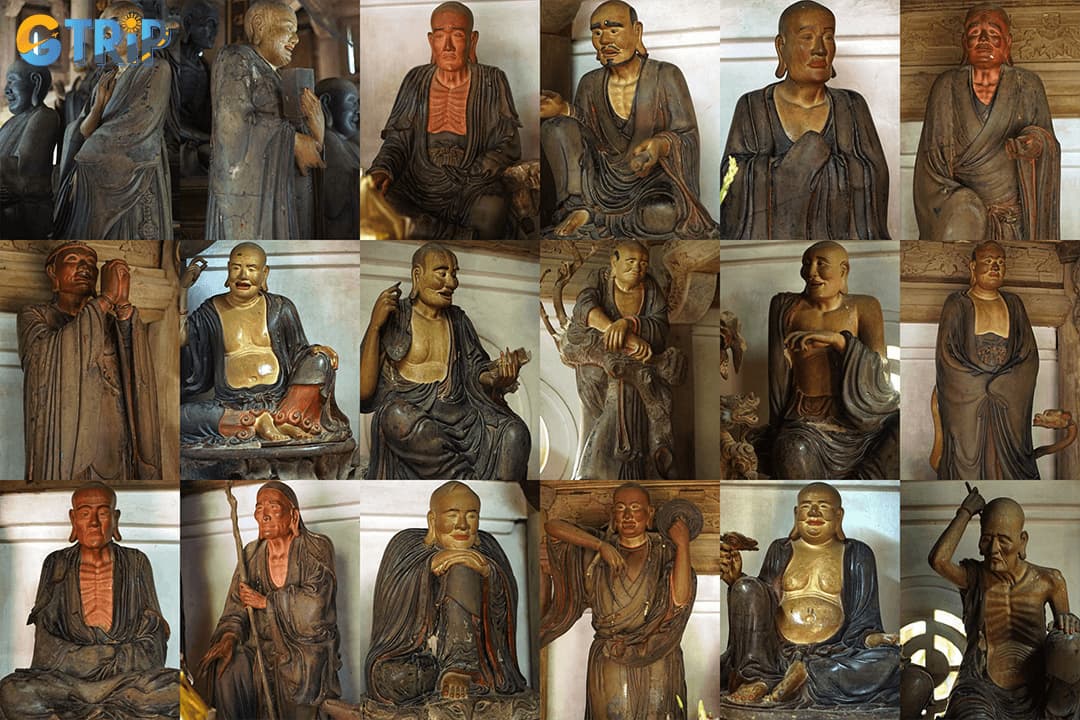
18 Arhats statues inside Tay Phuong Pagoda (From left to right, from top to bottom)
History of Tay Phuong Pagoda
Nestled in the lush foothills of the Sai Son mountain range, Tay Phuong Pagoda stands as a living testament to Vietnam's rich Buddhist heritage spanning over five centuries. Pagoda's history reflects the turbulent periods of Vietnam's past, having witnessed numerous dynasties rise and fall while maintaining its spiritual significance throughout the generations.
The origins of Tay Phuong Pagoda date back to the 16th century during the Mac Dynasty (1527 - 1592). Initially constructed as a modest place of worship, the pagoda was built on a peaceful hilltop location believed to embody powerful spiritual energy according to feng shui principles. During this early period, the pagoda served primarily as a meditation retreat for Buddhist monks seeking enlightenment away from worldly distractions. The original structure, though simpler than what stands today, established the foundation for what would eventually become one of northern Vietnam's most important religious sites.
The pagoda underwent its most significant transformation during the Le Trung Hung period (Restored Le Dynasty) in the 18th century. Between 1735 and 1740, Lord Trinh Giang commissioned extensive restoration work that redefined the pagoda's architecture and artistic elements. This renovation period marked the creation of Tay Phuong's famed wooden statue collection, now treasured nationwide. Master artisans were specifically appointed to oversee the intricate wood carving work. They produced 76 statues depicting various Buddhist deities, arhats, and guardians, all crafted with extraordinary detail and emotional expressiveness.
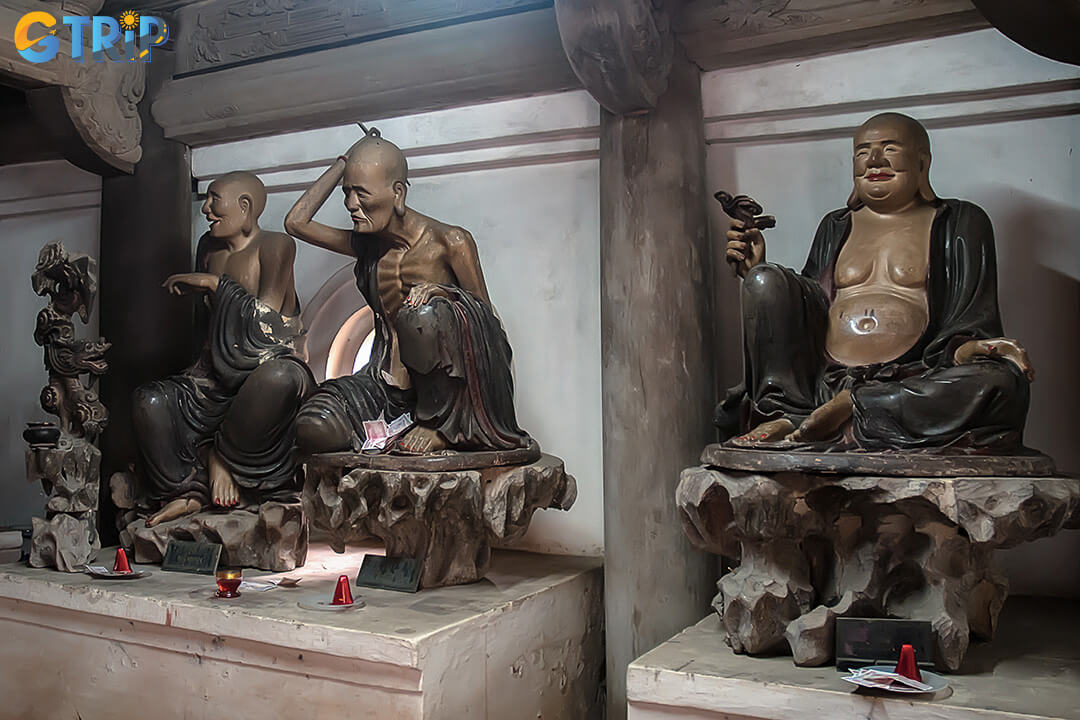
Tay Phuong Pagoda is built using ancient joinery techniques without nails, houses Vietnam’s treasured Arhat statues, and has been nationally recognized for its cultural
In 1794, during the short-lived but culturally significant Tay Son Dynasty, the pagoda underwent another comprehensive restoration. It was during this period that the site received its current name, "Tay Phuong Ancient Pagoda", acknowledging its historical importance and western position relative to Hanoi. The Tay Son rulers, known for their support of traditional Vietnamese culture, ensured the pagoda's preservation while adding architectural elements that reflected their aesthetic sensibilities. The three-tiered architectural design that characterizes the pagoda today was firmly established during this period.
The modern era brought formal recognition to Tay Phuong Pagoda's cultural significance. In 1962, the Ministry of Culture, Sports and Tourism of Vietnam officially designated the pagoda as a national historical and cultural relic, providing it with protected status. This recognition has helped preserve the site's authentic character while allowing for conservation efforts to maintain its structural integrity and artistic treasures. Today, Tay Phuong stands as a functioning Buddhist temple and as a museum-like repository of Vietnamese religious art, architecture, and craftsmanship. It draws scholars, devotees, and tourists from around the world.
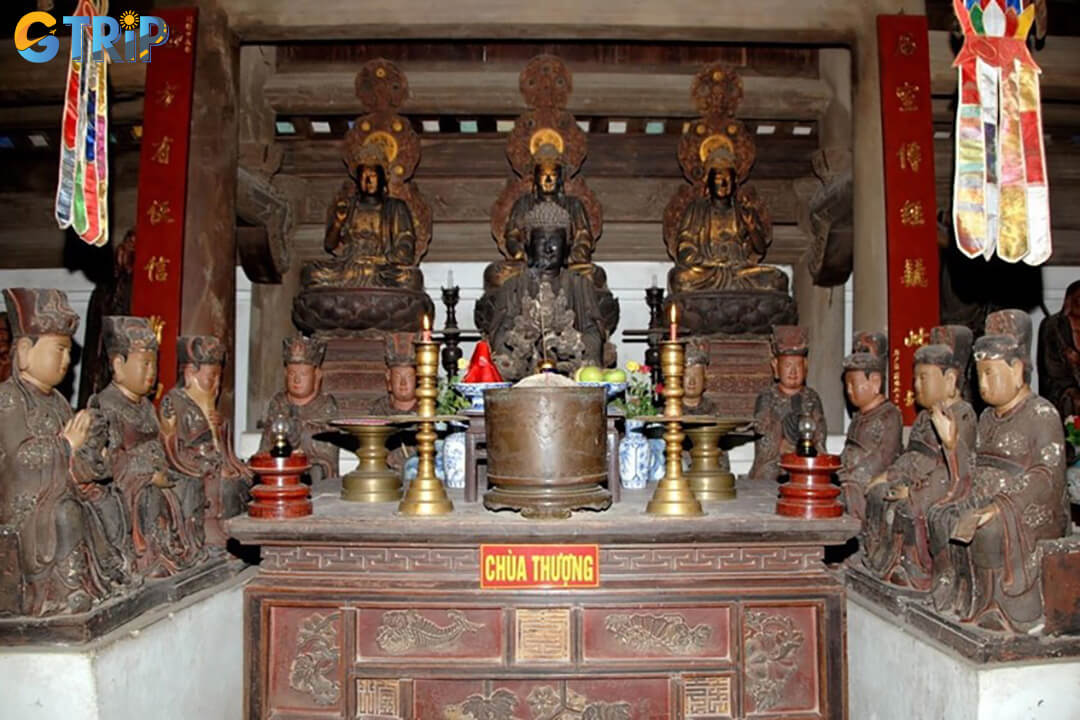
Founded in the 16th century, the pagoda is a nationally recognized site that reflects over 500 years of Vietnam’s Buddhist heritage and architectural evolution
Things to do in Tay Phuong Pagoda
Tay Phuong Pagoda offers you a rich tapestry of cultural, spiritual, and historical experiences. Located in the peaceful countryside of Hanoi's outskirts, this ancient Buddhist sanctuary provides numerous activities for travelers seeking authentic Vietnamese heritage. Admiring centuries-old artworks or participating in traditional rituals, the pagoda delivers a multifaceted experience that appeals to both casual visitors and dedicated Buddhist enthusiasts.
1. Explore the ancient Buddha statue collection
The highlight of Tay Phuong Pagoda is its 62 - 72 wooden Buddha statues, expertly carved in the 18th century by skilled Vietnamese artisans. The 18 Arhats stand out as masterpieces of religious art, each figure expressing distinct human emotions ranging from joy and serenity to anger and contemplation. These statues are notable for their exceptional detail, creating a startlingly lifelike presence despite being centuries old. Art historians regard the collection as one of Vietnam’s finest, with each statue reflecting rare individuality and emotion for its time.
- Most notable statues include:
- The "Arhat with Tiger" depicts harmony between humanity and nature
- The "Contemplative Arhat" shows a deep meditation posture
- The "Laughing Buddha" represents joy and abundance
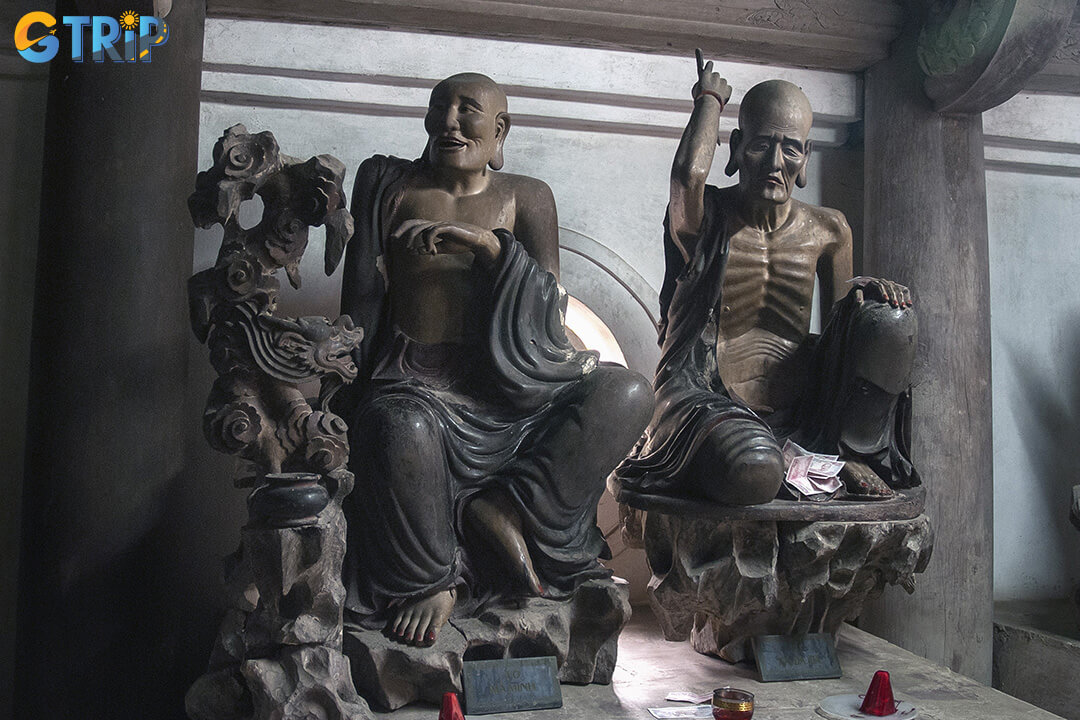
Tay Phuong Pagoda’s standout feature is its 18th-century wooden statue collection, especially the 18 Arhats
2. Discover the unique architecture of the pagoda
Tay Phuong Pagoda showcases exceptional Vietnamese architectural ingenuity, constructed entirely from ironwood without using a single nail. The structure follows the traditional "三" (Chinese character for "three") layout, symbolising the harmony between heaven, earth, and humanity, a fundamental concept in Eastern philosophy. The pagoda's most distinctive feature is its triple-tiered roof system, with each layer smaller than the one below, creating a graceful silhouette against the surrounding landscape. Inside, visitors marvel at the elaborate wooden beams adorned with intricate dragon carvings, phoenixes, and lotus flowers.
Architectural highlights of Tay Phuong Pagoda:
| Element | Description | Significance |
|---|---|---|
| Triple-tiered roof | Distinctive overlapping roof sections that narrow toward the top | Represents the three realms in Buddhism: desire, form, and formlessness |
| Wooden pillars | 16 massive ironwood columns supporting the main hall | Symbolize stability and endurance of Buddhist teachings |
| Carved beams | Intricate relief carvings depicting mythical creatures | Tell stories from Buddhist scriptures and Vietnamese folklore |
| Bell tower | Free-standing structure housing an ancient bronze bell | Used to mark prayer times and ceremonial occasions |
3. Participate in spiritual and cultural activities
Tay Phuong Pagoda remains an active place of worship where you can immerse yourself in authentic Buddhist practices alongside local devotees. Offering incense before the main altar allows for peaceful reflection while connecting with centuries of spiritual tradition. On auspicious lunar days, especially the 1st, 14th, and 15th of each month—the pagoda comes alive with rituals, chanting, and offerings. The atmosphere is particularly vibrant during major Buddhist holidays like Vesak (Buddha’s Birthday) and the Vu Lan Festival on the 15th day of the 7th lunar month.
During these special occasions, visitors can:
- Observe monks performing traditional Buddhist ceremonies
- Listen to rhythmic chanting and temple bell sounds
- Participate in meditation sessions (sometimes available with advance arrangement)
- Receive blessings from resident monks
- Learn about Vietnamese Buddhist practices from local worshippers who often speak some English
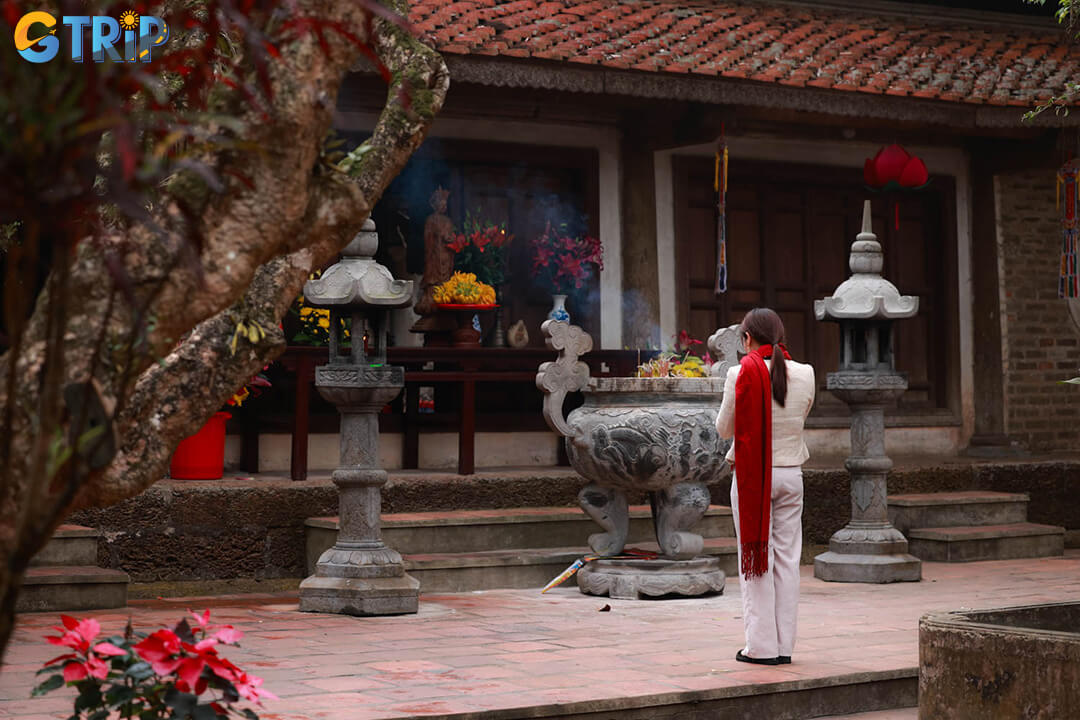
Tay Phuong Pagoda is an active spiritual site where visitors can observe or join authentic Buddhist rituals, especially on lunar calendar days
4. Physical and scenic experiences
The journey to Tay Phuong Pagoda itself forms an integral part of the visitor experience. The ascent up the 239 ancient stone steps carved directly into the hillside represents both a physical challenge and a symbolic pilgrimage toward enlightenment. These worn steps, polished by countless footsteps over centuries, wind through lush foliage before revealing the pagoda's elegant silhouette. At various points during the climb, strategic resting platforms offer breathtaking panoramic views of emerald rice paddies stretching to the horizon, creating perfect photo opportunities. The surrounding rural landscape showcases traditional Vietnamese countryside virtually unchanged for generations, with water buffalo grazing and farmers tending fields using time-honoured methods.
Best viewpoints along the stairway:
- The halfway resting pavilion (approximately step 120)
- The stone dragon lookout (near step 200)
- The final platform before entering the main gate
5. Cultural learning opportunities
Beyond its religious significance, Tay Phuong Pagoda functions as an open-air museum of Vietnamese cultural heritage. The site offers you numerous opportunities to deepen your understanding of local traditions, craftsmanship, and Buddhist philosophy. Informational panels throughout the complex explain the historical context and artistic significance of various elements in both Vietnamese and English. For those seeking more in-depth knowledge, local guides provide fascinating insights into the pagoda's role in Vietnamese history.
You can enhance their cultural understanding through:
- Reading the bilingual information displays about each major statue
- Examining the ancient calligraphy scrolls displayed in the main hall
- Understanding the symbolic meanings of recurring motifs like lotus flowers, dragons, and phoenixes
- Learning about the pagoda's construction techniques and restoration efforts
- Observing how local religious practices blend Buddhism with indigenous folk beliefs
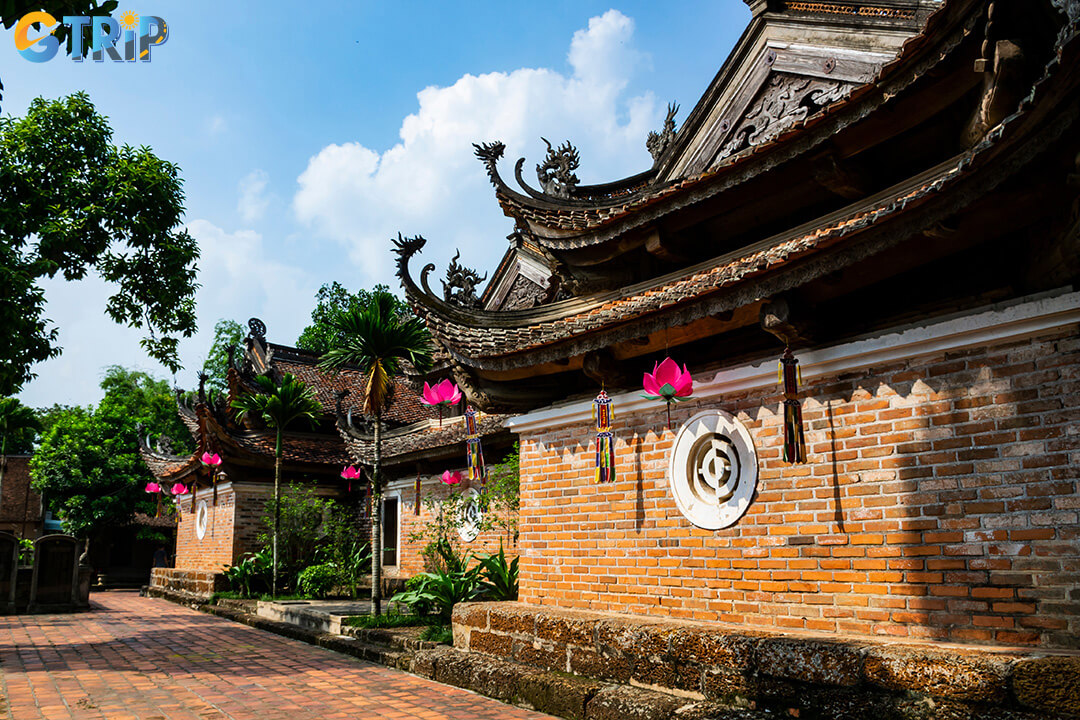
Tay Phuong Pagoda offers insights into Vietnamese culture, art, and Buddhist philosophy through bilingual displays, symbolic motifs, and expert local guides
Tay Phuong Pagoda Festival
Tay Phuong Pagoda Festival is a major Buddhist event in Hanoi, held annually on the 6th day of the third lunar month and lasts until the end of the third lunar month. This vibrant festival transforms the ancient pagoda into a bustling center of spiritual and cultural activities that last for several days. Pilgrims and tourists from across Vietnam converge on this sacred site, creating a colorful tapestry of religious devotion and cultural expression against the backdrop of the pagoda's historical architecture. The festival represents merely a religious observation and a deeply rooted cultural tradition that has persisted for centuries, connecting present-day practitioners with their ancestral heritage.
The festive part of the Tay Phuong Pagoda Festival features vibrant cultural activities, including folk games like stilt walking, swinging, and cloth ball throwing. Highlights include water puppetry, gong performances, and traditional wrestling, all showcasing local heritage. Visitors can also explore handicraft displays and sample regional specialties such as sticky rice candy and peanut sweets. Handcrafted items like wooden mini houses, bamboo dragonflies, and fine woodwork make for unique, meaningful souvenirs.
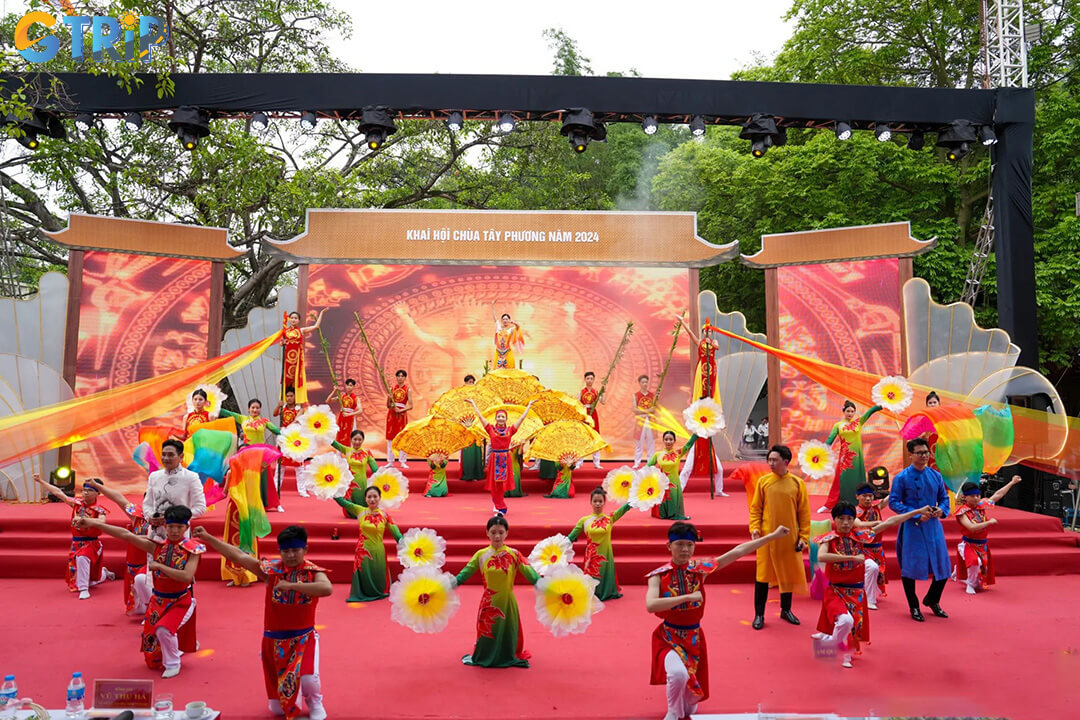
The Tay Phuong Pagoda Festival, held each third lunar month, blends Buddhist rituals and folk arts in a centuries-old cultural celebration
Notes when visiting Tay Phuong Pagoda
Planning a visit to Tay Phuong Pagoda requires some preparation to ensure you have a comfortable, respectful, and enriching experience. This ancient Buddhist site demands both physical readiness and cultural sensitivity. Here are essential guidelines to help you make the most of your journey to this historical treasure.
Physical preparation and access
The journey to Tay Phuong Pagoda begins with a climb that shouldn't be underestimated. The pagoda complex sits atop a hill, requiring visitors to ascend 239 stone steps carved from laterite. This moderate physical challenge rewards you with spectacular views and access to one of Vietnam's most cherished religious sites.
What to expect for the climb:
- 239 steps from the stone gate to the main complex
- Elevation of approximately 100 meters above sea level
- Laterite stone steps that can be slippery during or after rain
- Moderate physical exertion lasting about 15 - 20 minutes
- Multiple rest points available along the way
For those with mobility issues, the climb may present challenges, so consider your physical capabilities before visiting. The entire pagoda complex can typically be explored in about an hour, allowing sufficient time to appreciate the architectural details and ancient statues housed within the three main buildings.
Dress code and cultural respect
As an active place of worship, Tay Phuong Pagoda observes traditional Buddhist customs regarding appropriate attire and behavior. Respecting these practices is essential for a harmonious visit and demonstrates cultural sensitivity.
| Dress code requirements | Behavior guidelines |
|---|---|
| Cover shoulders and knees | Speak in hushed tones |
| No revealing clothing or shorts | Remove shoes when entering temple buildings |
| Modest attire preferred | No smoking on temple grounds |
| Head coverings may be removed | Ask permission before photographing monks |
| Comfortable walking shoes for the climb | Refrain from touching religious artefacts |
Best timing and transportation
Selecting the optimal time to visit Tay Phuong Pagoda can significantly enhance your experience. It is affecting everything from comfort to crowd levels and photographic opportunities.
Recommended seasons:
- September to April: Cooler temperatures and lower humidity
- Early morning (7 - 9 AM): Fewer tourists and beautiful morning light
- Late afternoon (3 - 5 PM): Golden hour lighting for photography
- Weekdays: Significantly fewer visitors than weekends
Transportation options from Hanoi:
| Transport method | Travel time | Cost range (VND) | Convenience level |
|---|---|---|---|
| Private car | 30 - 45 minutes | 600,000 - 800,000 | High (door-to-door) |
| Taxi | 35 - 50 minutes | 500,000 - 700,000 | High (metered fare) |
| Motorbike | 45 - 60 minutes | 150,000 - 200,000 (rental) | Medium (requires navigation) |
| Tour package | Varies | 300,000 - 1,500,000 | High (includes guide) |
The pagoda is located approximately 30 - 40km west of Hanoi's center. If traveling independently, download an offline map as mobile signal can be inconsistent in rural areas. For those less comfortable with self-navigation, numerous tour operators in Hanoi offer day trips that combine Tay Phuong Pagoda with other nearby attractions.
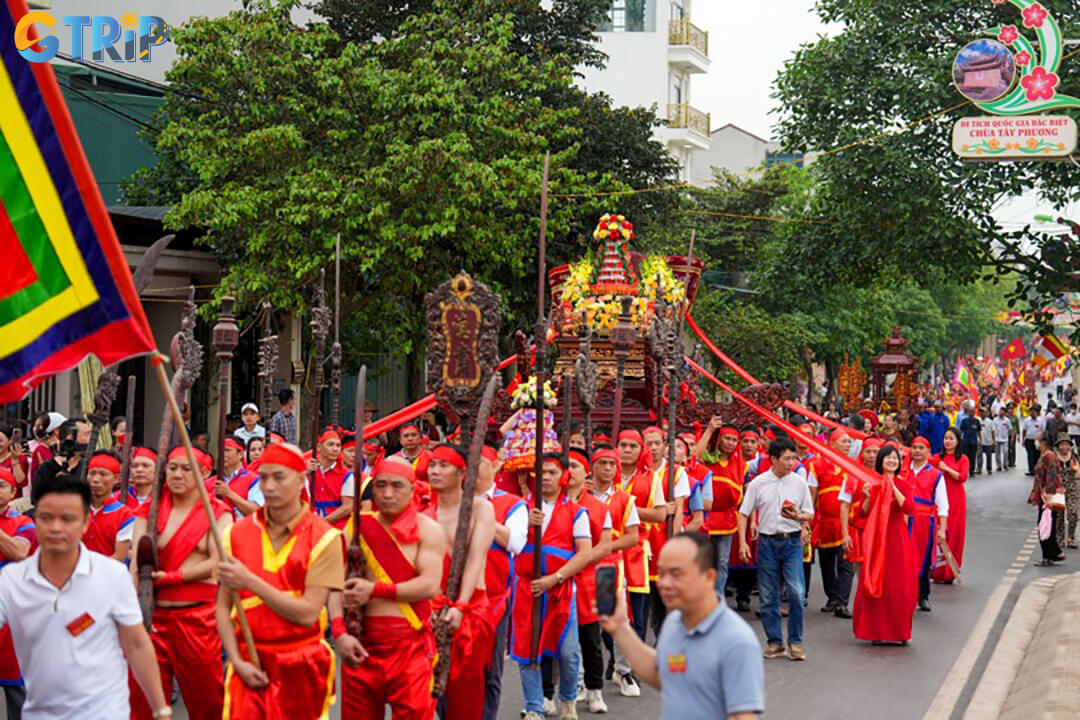
Visit Tay Phuong Pagoda on weekday mornings or late afternoons between September and April for ideal weather and fewer crowds
What to expect and see at Tay Phuong Pagoda
The cultural and artistic treasures of Tay Phuong Pagoda offer visitors a remarkable glimpse into Vietnamese Buddhist heritage. Understanding what to focus on ensures you won't miss the most significant elements.
Highlights to seek out:
- A collection of 62 - 72 ancient wooden statues carved from jackfruit wood
- The famous 18 Arhats depict human emotions from joy to contemplation
- Three-building complex arranged in the Chinese character "三" formation
- Double-tiered roofs with intricate carvings of dragons and phoenixes
- Distinctive red Bat Trang brick walls and symbolic round windows
- Carved wooden altars dating back to the 18th century
- Ancient bells, gongs, and ceremonial items
The wooden statues represent the pagoda's most celebrated treasures. Each figure possesses unique characteristics, with no two statues identical in expression or posture. Take time to observe the remarkable craftsmanship of these 18th-century masterpieces, which were recognized as national treasures in 2015.
Practical considerations
Several practical matters can make your visit more comfortable and enjoyable. From entry fees to combining attractions, these final considerations will help you plan effectively.
Entry and parking information:
- Entry fee: Approximately 10,000 VND per person
- Parking: Available at nearby shops for around 5,000 VND for motorbikes
- Operating hours: Generally 7:00 AM to 5:00 PM daily
- Photography: Permitted in most areas (no flash inside temples)
- Guided services: Available for hire at the entrance for 50,000 - 100,000 VND
Many visitors maximize their journey by combining Tay Phuong Pagoda with other nearby cultural sites. A popular itinerary includes visiting Tay Phuong Pagoda in the morning, followed by Thay Pagoda, and finishing at Duong Lam Ancient Village for lunch and afternoon exploration. This cultural circuit provides a comprehensive experience of traditional Vietnamese architecture, religious practices, and rural life all within a single day trip from Hanoi.
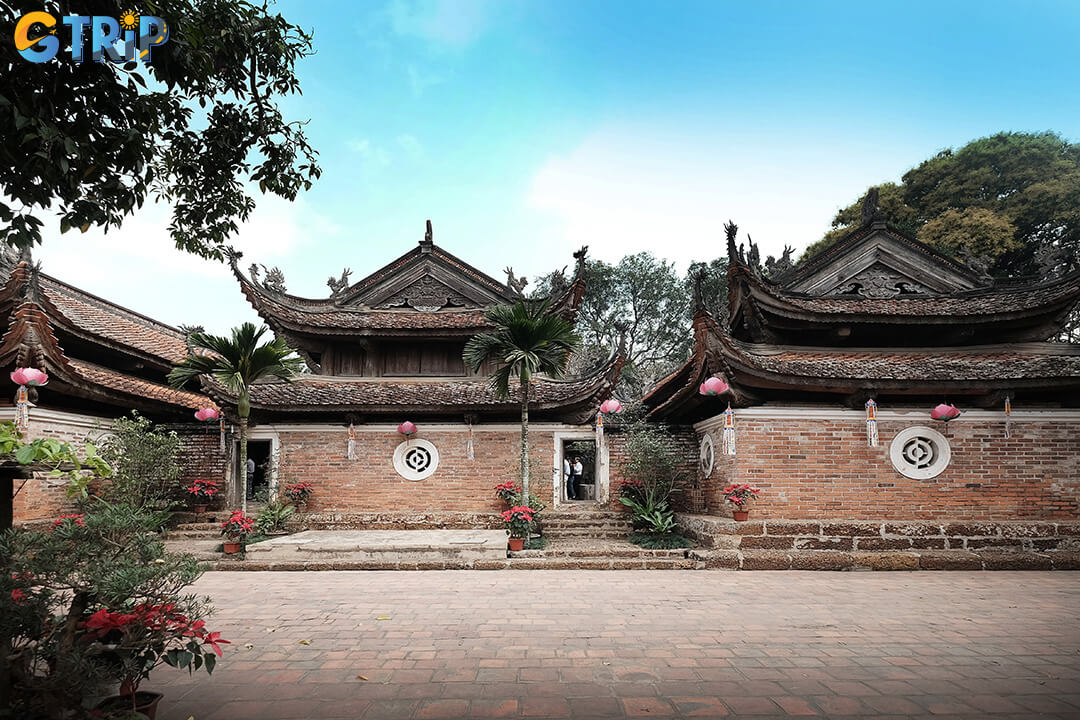
You can combine with Thay Pagoda and Duong Lam Village for a full cultural day trip
As your exploration of Tay Phuong Pagoda draws to a close, you’ve immersed yourself in its spiritual ambiance and experienced the profound cultural history it embodies. If it's the intricate architecture or the captivating stories behind each statue, your journey feeds both curiosity and tranquillity. This pagoda offers more than just a scenic escape, it opens a window to Vietnam's rich heritage and timeless traditions. With this newfound perspective, you're perfectly poised to delve deeper into other enriching destinations that await discovery. If you're still inspired to explore, Tay Phuong Pagoda awaits with stories ready to be discovered at every turn. And should you ever ponder Vietnam again, GTrip will be here, promising you many more journeys into beauty and wonder.

